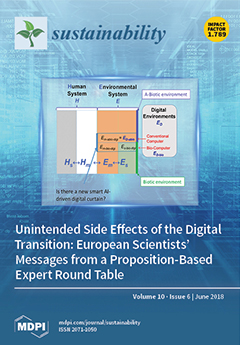Open AccessArticle
How to Address the Sustainability Transition of Farming Systems? A Conceptual Framework to Organize Research
by
Guillaume Martin, Sandrine Allain, Jacques-Eric Bergez, Delphine Burger-Leenhardt, Julie Constantin, Michel Duru, Laurent Hazard, Camille Lacombe, Danièle Magda, Marie-Angélina Magne, Julie Ryschawy, Vincent Thénard, Hélène Tribouillois and Magali Willaume
Cited by 26 | Viewed by 6747
Abstract
Stakeholders from academic, political, and social spheres encourage the development of more sustainable forms of agriculture. Given its scale and scope, the sustainability transition is a challenge to the entire agricultural sector. The main question is, how to support the transition process? In
[...] Read more.
Stakeholders from academic, political, and social spheres encourage the development of more sustainable forms of agriculture. Given its scale and scope, the sustainability transition is a challenge to the entire agricultural sector. The main question is, how to support the transition process? In this article, we explore how agricultural science can address the sustainability transition of farming systems to understand and support transition processes. We discuss the potential for articulating three research approaches: comprehensive analysis, co-design, and simulation modeling. Comprehensive analysis of the sustainability transition provides perspectives on the interplay between resources, resource management, and related performances of farming systems on the one hand and technical, economic, and sociocultural dimensions of change on the other. Co-design of the sustainability transition stimulates local-scale transition experiments in the real world and identification of alternatives for change. Simulation modeling explores future-oriented scenarios of management at multiple levels and assesses their impacts. We illustrate the articulation of research approaches with two examples of research applied to agricultural water management and autonomy in crop-livestock systems. The resulting conceptual framework is the first one developed to organize research to understand and support the sustainability transition of farming systems.
Full article
►▼
Show Figures





